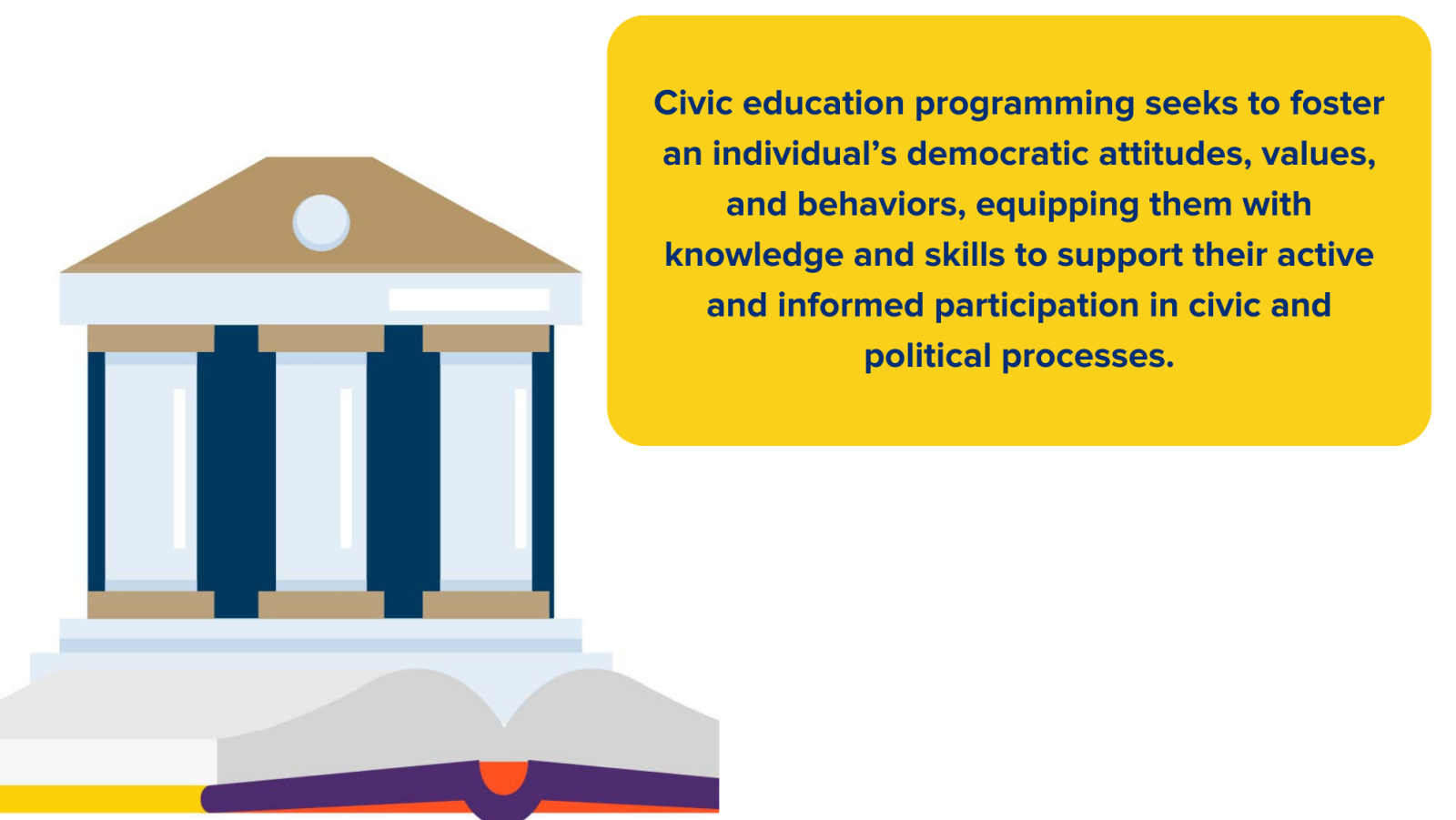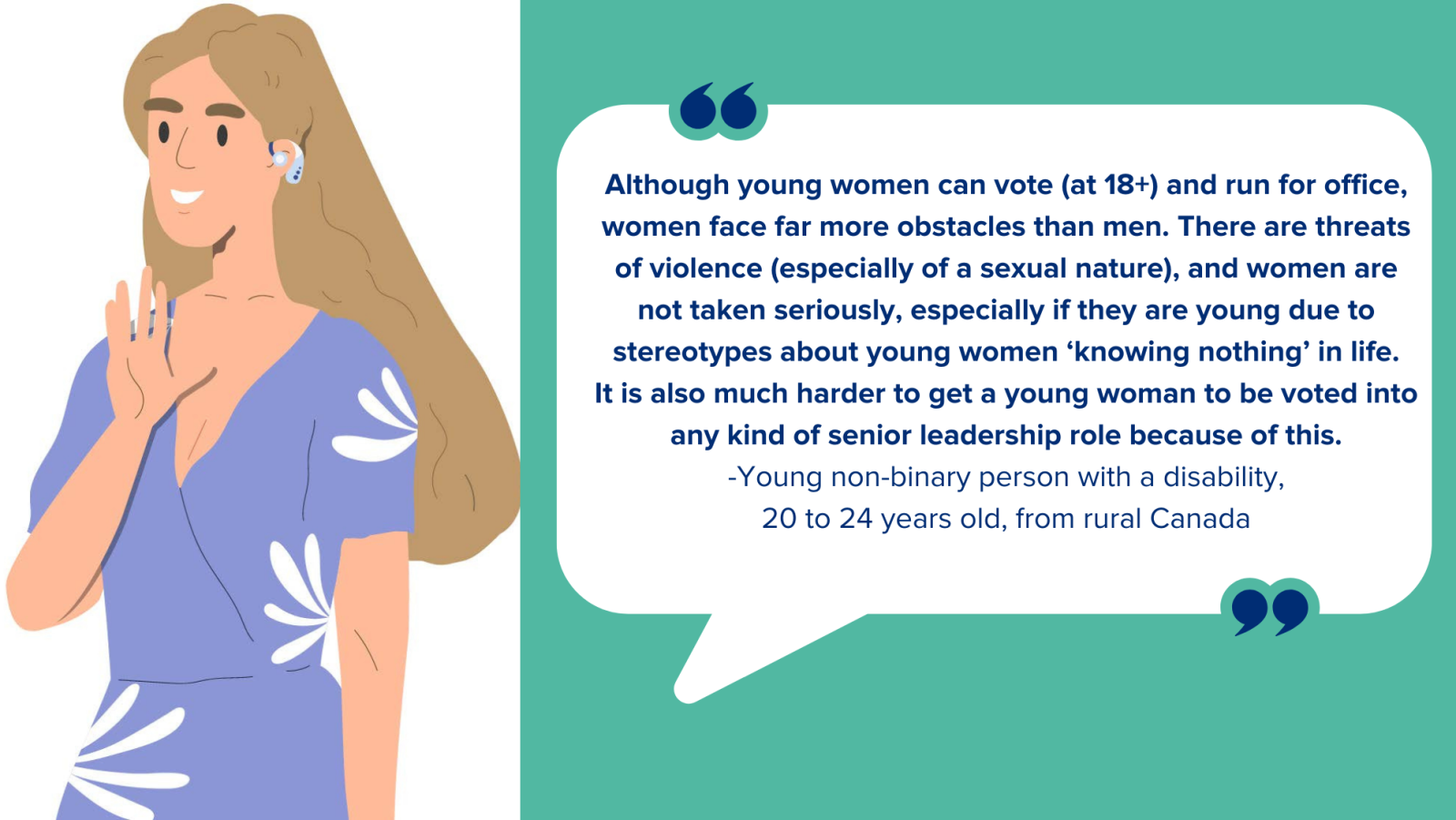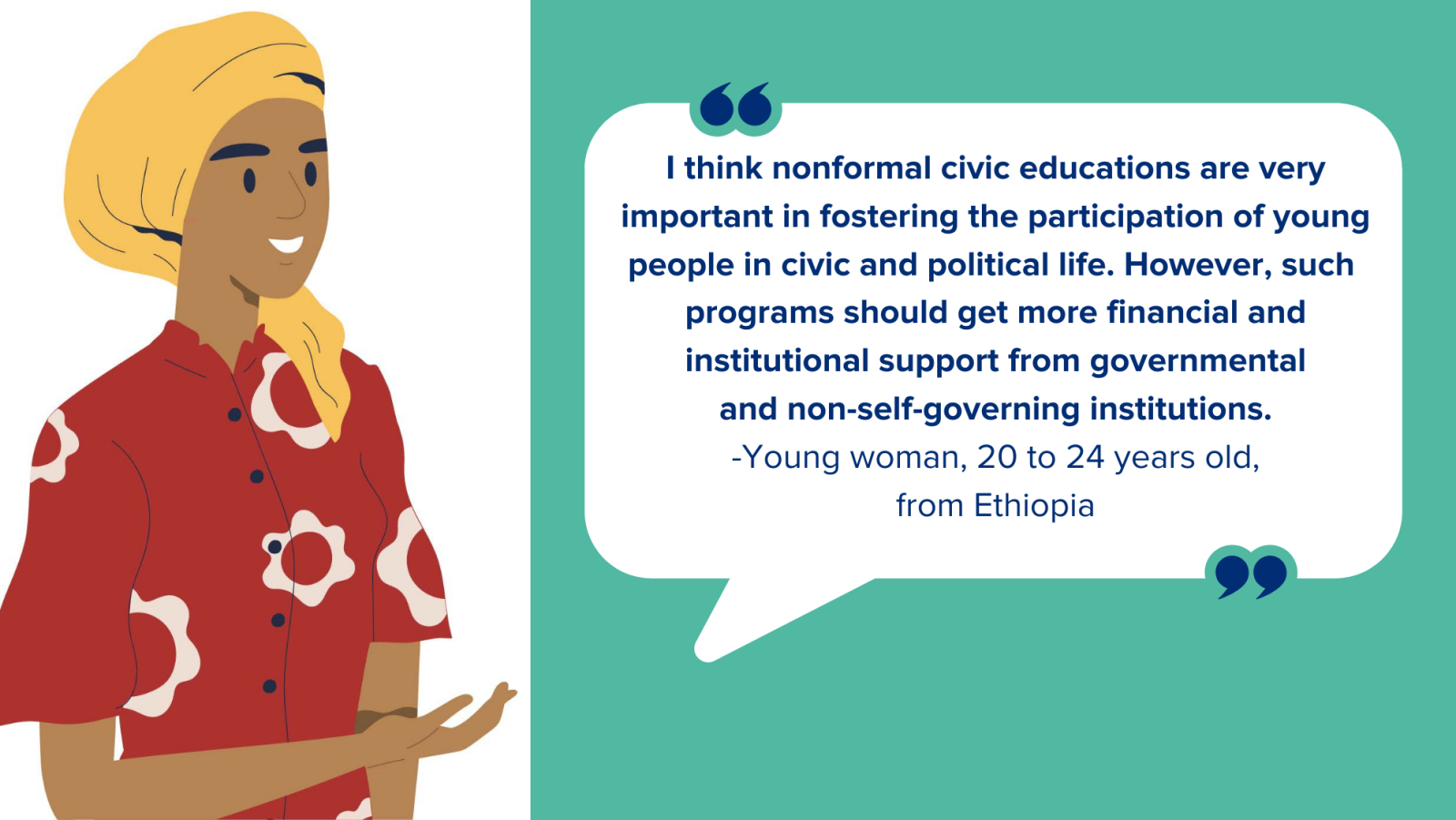Introduction
Introduction to Civic Education
Civic education programming can be categorized as either formal or nonformal. Formal civic education occurs in schools or educational settings; partners are often Ministries of Education, universities, educators, and school administrators, and the primary recipients are students. Nonformal civic education is much more flexible, as this type of programming occurs outside of formal institutions and can involve diverse partners, facilitators, and recipients who engage in a variety of learning mechanisms. For example, nonformal civic education programming could be delivered by a youth-led CSO and include activities like conducting a leadership training with rural youth, facilitating a virtual town hall on social media to solicit feedback on a recent amendment to an electoral law, or creating a community mural as a peacebuilding and dialogue effort.
Civic education programs have proven to be effective tools for building and sustaining democracies, demonstrating long-term impact on not only those who participate in civic education programming but entire communities.6 Traditionally, civic education programming has focused primarily on formal curricula implemented in schools—some of which are inequitable across racial and socio-economic dimensions. Civic education curricula can reflect these inequities and other democratic shortcomings embedded in a country that do not align with universal human rights. In these contexts, a formal approach to civic education alone will not include all young people, such as those who are not in school due to barriers related to gender identity, disability, language, and geography.
The Power of Nonformal Civic Education
The authors created this guide to fill an important research gap. In countries where not all young people have access to formal school systems, nonformal civic education can play a strong supplementary and complementary role, bridging the gap for the most marginalized youth populations. Because nonformal civic education can be designed in flexible ways, it provides a great opportunity to better engage marginalized youth populations. This is often a challenge for formal civic education programs.
Barriers to engaging young people in civic education exist globally. Thirty percent of young women are not in employment, education, or training;7 25 percent of young people are affected by armed conflict;8 10 percent of children and young people have disabilities and are “49 percent more likely to have never attended school,” compared to children without disabilities;9 and approximately 1 billion young people live in rural areas.10 These barriers to traditional, formal civic education were further exacerbated by the COVID-19 pandemic,11 as two-thirds of the global population ages 25 years and younger did not have internet connections at home and could not access remote and virtual learning options.12
The rapidly growing and increasingly diverse youth population of 1.8 billion,13 decreasing levels of youth political participation,14 and global trends of democratic backsliding in established and developing democracies call for more sustained participation by all young people. As countries emerge from the pandemic and rebuild their communities, it is critical that young people are supported and encouraged to find new and meaningful ways to engage or reengage in democratic processes.
Young people and their contributions are directly linked to building and sustaining democracy.15 Yet, young people are rarely involved in formal civic education curriculum design and implementation, as they are typically seen only as the recipients of such programming. However, there is room for diverse youth participation, including through youth-led or -focused CSO involvement in nonformal civic education design and implementation. This involvement may result in more contextually relevant activities that are more accessible to and inclusive of diverse youth populations. Nonformal civic education provides the flexible approaches needed to support and empower all young people to participate democratically in their communities and countries.
Nonformal civic education programming can be the key to promote and reengage young people in democratic processes.
- Nonformal civic education can center young people in design and delivery. Nonformal civic education that applies a Positive Youth Development approach16 can empower young people to design and deliver civic education, drawing on their own agency, assets, and experiences.
- Nonformal civic education can be localized. Nonformal civic education can be implemented at the grassroots level to localize content, partnering with community leaders to build young people’s confidence to engage and shape democratic behavior at local, regional, and national levels.
- Nonformal civic education can be highly adaptable to integrate inclusion and accessibility. This type of programming can be iterative, flexible, and responsive to diverse learning environments and provide opportunities for all youth populations, including those not formally enrolled in school.
Citations
United Nations, 2020.
Vision of Humanity, 2018.
United Nations Children’s Fund (UNICEF), 2021.
International Fund for Agricultural Development, 2019.
UNICEF, COVID-19 and children.
United Nations Children’s Fund and International Telecommunication Union, 2020.
United Nations, 2022.
Consortium for Elections and Political Process Strengthening, 2019.






